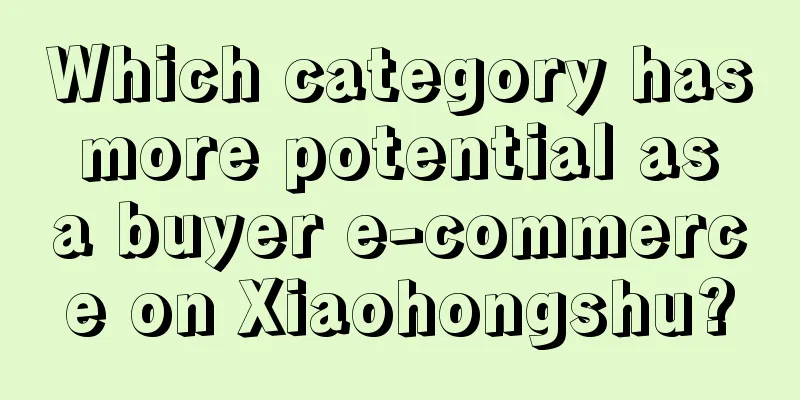Wild luxury camping has been popular for two years and remains popular: half rough and half refined!

In 2022, which consumer sectors are still hot and are expected to maintain expansion and growth after the epidemic? Camping is definitely one of them. Similar to many other activities, camping is also one of the hot spots that has been blown up by the epidemic. As early as 2020, various health codes/nucleic acid codes/travel codes have gradually made tourists anxious. In-province tours, short-distance tours, and suburban tours have become popular, and camping has begun to become a new signboard for major scenic spots to attract people. As camping attracts more and more young people to check in and take photos, the topic of camping based on social platforms continues to ferment, and this outdoor sport is also moving from a niche to the masses. After sorting out the data from social platforms such as Xiaohongshu, Douyin and Kuaishou, the well-known travel platform AECOM pointed out that the search volume for camping topics on Xiaohongshu increased by 290%/230%/746% year-on-year during the May Day period in 2020/2021/2022, respectively. As of the end of June this year, the playback volume of Douyin/Kuaishou based on the topic of #camping# reached 14.11 billion/1.38 billion times, respectively. It can be seen that despite the occasional relaxation of lockdown during the epidemic, camping as an outdoor sport has been able to maintain its popularity and continue to rise, which shows its charm. The market also has reason to believe that as the concept of camping is gradually recognized by consumers, this sport is expected to become a lifestyle, and camping sites can change from a destination for checking in and taking photos to an important medium for people to "live while on vacation". The Community Marketing Institute once pointed out that it is difficult to make money from content/platforms that are purely focused on outdoor sports. They also need to sell equipment, customer sources, brand exposure/marketing plans, derivative services (such as catering), and social methods (such as circle social resources) to fill in their capital stories. Therefore, when consumers choose to get started with an outdoor sport, they must pay attention to its material foundation - is there enough friendly business infrastructure in the market to lower its consumption threshold? Recently, AECOM released the "Wild Luxury Camping Special Research Industry Research Report" , which not only redefined/positioned the camping industry, but also made a comprehensive review and outlook on its policy environment, industry status, development and operation, challenges and opportunities: What kind of camping products are more mature? What kind of synergy do the above camping products need from policies, markets (outdoor equipment brands/social platforms/professional service providers/hotels, etc.), and consumers? What operational skills should be paid attention to when developing camping products in different geographical locations and forms, and how to manage investment return expectations? The Community Marketing Institute has distilled the essence and shared it with readers. 1. What are the challenges for popular camping products to go from “wild” to “wild luxury”?Unlike many media and securities firms that interpret current camping products as "refined camping", AECOM defines it as wild luxury camping. What is wild luxury camping? It is to pursue both the "wildness" of rough nature and the "luxury" of exquisite facilities, using supporting facilities, dedicated guidance, recreational services and more popular pricing to satisfy consumers' desire to find a relatively easy survival experience mode in a relatively primitive natural environment. This interpretation is undoubtedly insightful. If you just set up some tents on the beach next to the hotel and create various artificial natural ecosystems, you will undoubtedly misjudge the aesthetic taste of consumers and the connotation of wild luxury camping. Wild luxury camping became an official term (GLAMPING) first appeared in the UK in 2005 and was included in the Oxford English Dictionary in 2016. Its connotation is basically equal to half Camping (experience of outdoor exploration) plus half Glamorous (campsites that provide services). Wild luxury camping also follows the logic of many industries spreading from the nobility to the masses. As early as the early 20th century, European nobles would equip their tents with carpets, chandeliers, and porcelain when exploring the African grasslands. As the camp technology and facilities continue to improve, the price of wild luxury camping has become more affordable and gradually spread to the masses. However, even in Europe and the United States today, the wild luxury camping market only accounts for about 30%. The market in Europe was driven by companies such as Huttopia and Canopy&Stars to become mature and standardized around the millennium, while the United States had to wait 10 years for players such as Under Canvas/Autocamp to drive the improvement of camping quality. This means that it may take another 5-10 years for China to take over this market trend and have a number of mature brands emerge. The positive side of the domestic market is that many companies engaged in camping-related activities have achieved good results through marketing on the Xiaohongshu platform. For example, the online celebrity camping brand Dare Wilderness, which established its first camp in October 2020, expanded the number of camps nationwide to 20 within 9 months, and its revenue in the first half of 2021 exceeded 10 million. But there are still many fundamental problems in the industry that have not been resolved:
Based on the experience of mature markets such as Europe and the United States, the domestic market can learn from the following directions:
In general, the current domestic wild luxury camping market still has problems such as being dominated by internet celebrities checking in, a single product experience, and administrative measures that do not address the root causes. If we want to make wild luxury camping a lifestyle for some people in some circles, we need a multi-dimensional effort from policies, markets, and consumers. 2. What is the current status of the upstream and downstream of the domestic wild luxury camping industry?As mentioned above, fundamentally solving the industry difficulties of wild luxury camping mainly involves the issue of campsite land use regulations. Camping construction was first promoted at the national level in China around 2015, with the encouragement focused on promoting the demand for car campsites for self-driving tours, as well as the demand for point-based land supply/outdoor sports campsites for rural revitalization and national fitness in recent years. The basic principles of the camp land use regulations are that farmland must not be occupied, and no or less arable land must be occupied. Urban land must go through the conversion/expropriation/supply procedures. Non-urban land but permanent construction land must give priority to the use of existing construction land. Guangdong, Zhejiang, Yunnan, Anhui, Jiangsu, Shanghai and other places are currently the most advanced in exploring land supply regulations at the local government level. Most of them respond to the policy of rural revitalization and insist on point-based land supply. Due to the above-mentioned land development restrictions, there are four major types of players entering the wild luxury camping market:
Based on the current domestic industry situation, upstream companies such as Mobi and others that mainly produce tent-related products have emerged, and the emerging outdoor equipment brand Nook has also received nearly 100 million yuan in financing from Zhongding Capital; in the midstream, there is no independent camping information platform yet, mainly because the market products for camping sites are not mature enough; in the downstream, whether it is specialized service providers such as Wilderness Resorts, or traditional tourism players such as hotels, such as star-rated hotels such as the Waldorf Astoria Beijing and Crowne Plaza Qingdao Oriental Movie Metropolis, all have launched camping experience products. At the downstream consumer level, the Community Marketing Institute once pointed out that families born between 1985 and 1990 are the core consumers of wild luxury camping. Compared with young people, they have fatter wallets, and compared with the older generation, they have just started a family and a career. They pay more attention to the ritual sense of life and the physical and mental relaxation brought by travel. Most of this audience has migrated from inter-provincial tourists, or have had the habit of traveling nearby. Camping is equivalent to providing a more mature tourism product. AECOM also pointed out the structural characteristics of this customer group: young people traveling together and family tourists are the two main consumer groups in China's wild luxury camping market, among which those born in the 1980s and 1990s accounted for the highest proportion, reaching 44% and 29% respectively. Moreover, whether it is the market pricing of wild luxury camping that is close to four-star hotels, or the accessibility of wild luxury camping and the willingness to embrace nature, consumers in high-tier cities are more likely to accept it, among which first-tier and new first-tier city customers account for 35% and 39% respectively. 3. What are the operational points for different forms of camping products?There is no doubt that if you want to survive in the wilderness, you first need a sturdy outdoor living equipment. The existing mature wild luxury camping products are mainly divided into two types: (semi-fixed) tents and (trailer-type) RVs. Among them, tents include bell tents, yurts, dome tents, etc. according to their different shapes, and RVs include RV campers, breeze windmills, caravans, etc. Different equipment will bring different interior environments, internal loads, living experiences and landscape perspectives. For example, a dome tent is generally a spherical building built on a wooden platform, with a galvanized steel frame and a cover on the surface. The advantage is that a transparent window can be set up, and you can see the sky when lying on your back in the tent; but if you pursue the ultimate home-like convenience, it may be more appropriate to have a smaller version of the house, such as an RV camper, which is fully equipped with bedding, kitchen utensils, furniture, and built-in water supply and wastewater systems. The addition and subtraction of the above products also varies from person to person. Under the most minimalist facilities, you can experience the fun of hands-on by building a sturdy tent by yourself. If you want to take a completely comfortable and burden-free vacation, it is also possible to go for a merchant tent with a higher budget and ready-to-move-in. Between product assets, whether light or heavy, there are a lot of entry angles for market players. Among them, the typical camping brand Wilderness is very popular. Due to its marketing efforts on the Xiaohongshu platform, its main products are tent building and picnic camping products with check-in experience. Its operating model is to form a group, not rent a site, and share revenue with hotels and scenic spots. It provides 14 tents, public bathrooms, and outdoor shared living rooms in a scenic spot, covering a total area of about 2,000 square meters. The billing is 799 yuan/person/night. Consumers can choose to live with friends or live by themselves, and enjoy tent building/breakfast, lunch, dinner/bonfire/movies and other experience content. Since such projects require relatively light investment, the payback period is also relatively short. In contrast, another domestic project with relatively heavy investment is a one-stop camping experience project invested and built by Yangke Camping in Longmen County, Huizhou, Guangdong. It provides a larger site area (30,000 square meters) and more tents (34 tents), but the core experience projects provided are not much different from those of the Great Wilderness. The feature is that there are more tents and customized/differentiated product services can be provided for different customer groups (such as family/parent-child customer groups). Another manifestation of the heavier assets of this project is that it directly rents urban suburban land and operates independently. The commonality of the above projects is that they have obvious off-seasons and peak seasons. If they are operated independently, they may have to bear a lot of expenses for campsite rental and maintenance during the business-free period, as well as expenses for the operation and management team. Whether you can establish a good first impression in the stage of attracting new customers and how to obtain stable repeat customers are very challenging to your operation capabilities. 4. Campsite operation focus: standardize land use, strengthen product features, increase repeat purchases, and smooth out the gap between off-season and peak seasonWith the rise of the camping craze, chaos in campsites has also frequently occurred. Since campsites are different from general hotels or entertainment facilities, there are still unclear industry regulations on land use standards. Therefore, entrants must conduct professional research and evaluation of campsites in the early stages of operation to avoid illegal demolition. In recent years, countless projects have been demolished due to failure to obtain environmental protection, public security and fire approval, or due to failure to pay attention to environmental protection, such as the Yijing Campground in Lijiang, Yunnan, the Eyishan RV Campground in Dongguan, Guangdong, and the Longwan International Camping Park in Yanqing, Beijing. In addition to the land use regulations of the campsite, the professionalism and diverse options of camping equipment also bring challenges to the user experience. First of all, the key points of equipment protection are different in different geographical and weather environments. For example, the base wood of the tent near the forest must be treated to prevent moisture, and the tent in too humid areas must be disassembled and aired immediately. Secondly, if it is provided by the merchant, how to choose equipment that better meets the public's expectations and can reduce losses becomes the key to "cost reduction". As wild luxury camping matures, the transition of operational focus from attracting new customers to retaining old customers has also become a tense battle between brands: how to create more daily business activities (such as undertaking corporate team building), how to create more differentiated camping experience products in specific window periods (such as whether there are special activities besides setting up tents/catering/campfires/movies), and seize the peak season of camping traffic, which tests the imagination and wisdom of camping entrants. Source: Community Marketing Research Institute (ID: Community_Marketing), insights into community consumption |
<<: 2023, not only private domain, but also growth!
>>: Not relying on appearance but relying on voice, @姚尧不是P30 Why is it both funny and magical
Recommend
The underlying logic of the growth of Xiaohongshu brands and bloggers - categories
Introduction: Through the analysis of past experie...
Does cross-border e-commerce not require products? How to do cross-border e-commerce without sources of goods?
With the popularization of the Internet and the de...
What to do about Amazon's replenishment restrictions? How to avoid replenishment restrictions?
Merchants who open stores on Amazon sometimes enco...
Can an inactive Shopee store be restored? Detailed answer
Many people have opened stores on Shopee but have ...
10 essential models for Xiaohongshu in 2023
The latest data shows that Xiaohongshu currently h...
Alipay has decided to "TikTok-ize", is it feasible?
Is Alipay heading for "cosmic expansion"...
With 180,000 followers, you can become the king of followers, but it is difficult for Xiaohongshu bloggers to stand out
This article analyzes the growth of Xiaohongshu bl...
Can Chinese fruits be sold on Amazon? Is it risky?
Whether it is the Amazon platform or other cross-b...
TikTok refugees became popular overnight and became the savior of Xiaohongshu’s overseas expansion
This article will explore how Xiaohongshu successf...
What should we do if the customer success department becomes customer service again?
Why has the work of the customer success departmen...
Are more variations better on Amazon? What are the rules?
For Amazon merchants, operating stores is very imp...
How to write a cross-border e-commerce advertising script? How to advertise?
With the development of the global economy and the...
With over 100 million views, internet celebrity "Gazhu Girl" is the new top streamer on Tik Tok!
Compared with the beautiful and exquisite beauties...
Amazon US UPS return service extended to November 1
Amazon US announced that Amazon recently launched ...
How to enable cash on delivery on Lazada? Related questions answered
The general shopping process on the Lazada platfor...









